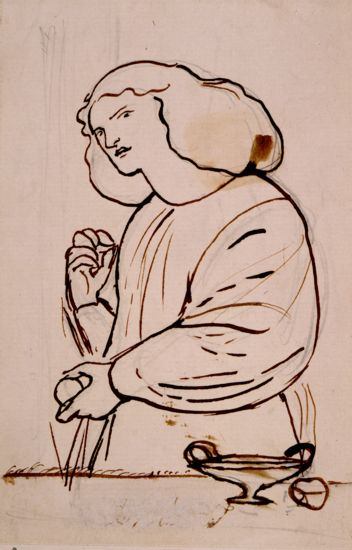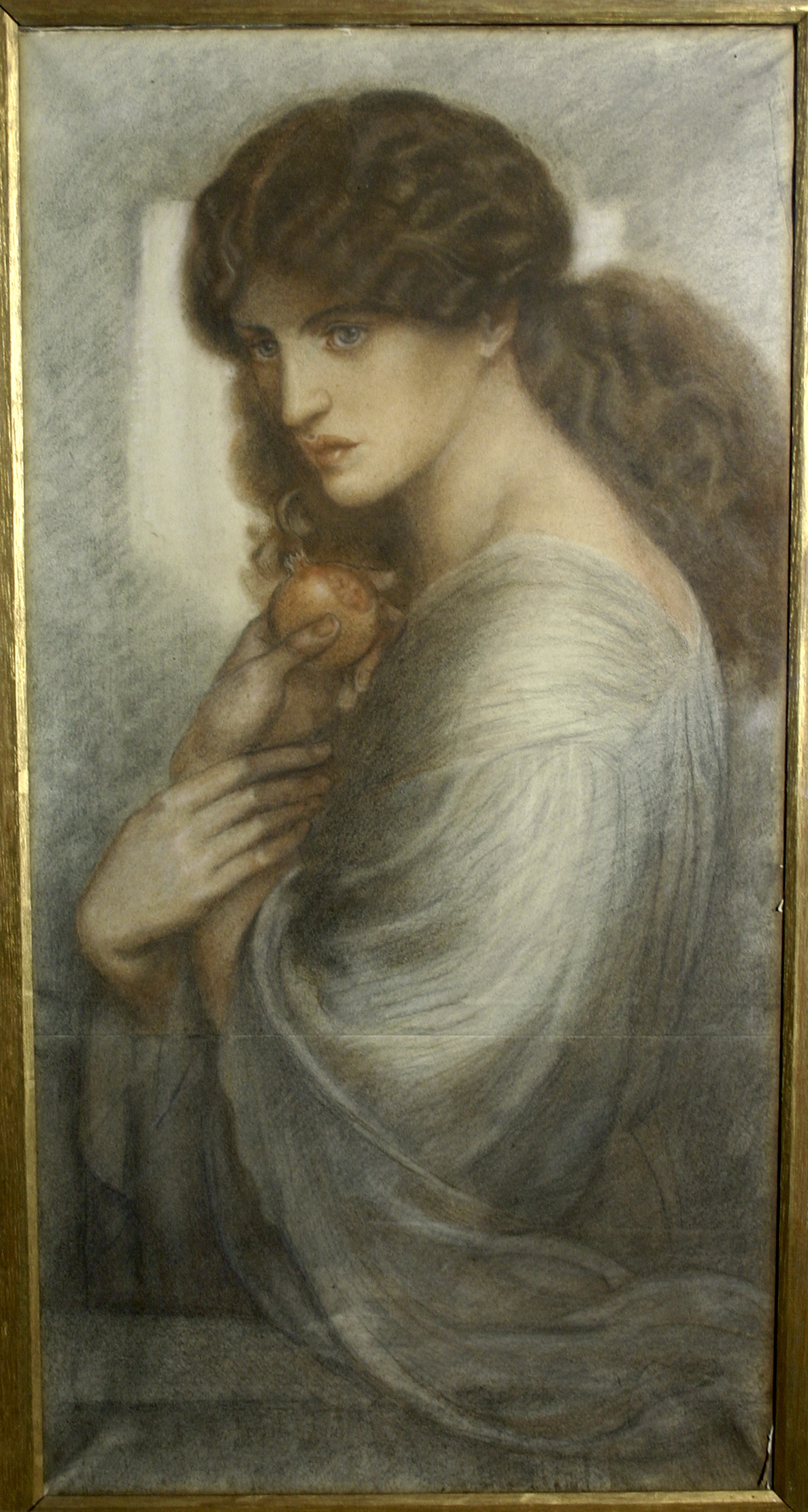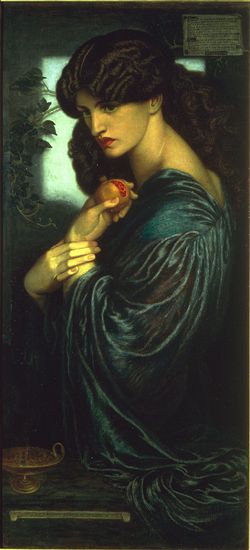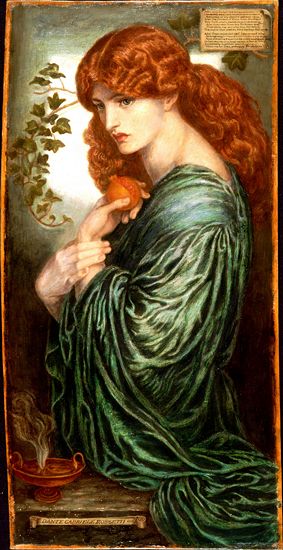Persephone in Poetry and Art
Joanna Swafford
University of Virginia
667
This exhibit showcases some Nineteenth Century works of poetry and art that focus on the mythological figure of Persephone, while also highlighting criticism that closely examines the same theme. These objects comprise only a small sample of the works that NINES makes available, and will hopefully encourage viewers to continue exploring all that NINES has to offer.
|
This image is the earliest sketch D. G. Rossetti produced towards his painting of "Proserpine." Proserpine appears to be thoughtfully looking into the distance, idly holding the famous pomegranate. The other images on this page trace the diverse versions of the painting and the changes this iconic picture has undergone. For detailed information of the history of each painting and a more thorough analysis of the images themselves, the Rossetti Archive, available through NINES, is a perfect resource.
|
|
In this chalk study for "Proserpine," Rossetti's conception of the figure has changed from the original sketch; the goddess's body language conveys her imprisoned state, and the pomegranate occupies a more prominent place in the scene. Her gossamer clothing through which one can almost see the color of her skin makes her appear fragile and angelic as well as sensual.
|
|
In Rossetti's seventh version of the painting, the darker colors both of the background and of her hair and clothing accentuate the gloom of the scene. The material of her clothing likewise conveys her trapped condition; since it looks far heavier than the more gossamer style of clothing in the chalk version, it transforms her from an angel to a woman weighed down and unable to leave the underworld.
|
|
In Rossetti's eighth version of the painting, although the outline and shapes are almost identical to that of the seventh version, the colors suggest a different interpretation of the scene. By using more vivid colors, Rossetti makes the scene appear less ominous while making Persephone herself seem more like a figure from an illuminated manuscript or religious painting than a pagan deity. The lighter colors also enable a viewer to see more of the background, thereby lessening the claustrophobic sense of the earlier version.
|





